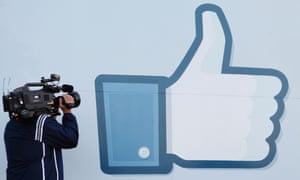News Institutions Research
BBC News
British commercial company formed on 18 October 1922. BBC combine global audience revealed at 308 million. By 2020 estimated 500 million global reach amongst viewers.
- John Reith founded the company
- BBC Global News Ltd’s audience has grown to 105 million with BBC World News TV’s up by 12 per cent, and bbc.com/news growing by 16 per cent.
- For the first time, television (148m) overtook radio (133m) as the most popular platform for BBC international news, and it is also the first time since the BBC tracked audiences for all three platforms – radio, TV and online (55m) – in English and 28 other languages – that they’ve all grown in the same year.
- World Service TV news content is now available in 12 languages.
The BBC is available on the TV/ONLINE/APP/YOUTUBE/FACEBOOK
The Daily Mail
'The Daily Mail' is a British daily middle-market newspaper, First published in 1896 by Lord Northcliffe, it is the United Kingdom's second biggest-selling daily newspaper after The sun. Its sister paper 'The Mail on Sunday' was launched in 1982.
- It was at the outset a newspaper for women, the first to provide features especially for them, the only British newspaper whose female readers constitute more than 50% of its demographic.
- approximately 2.503 million were in the ABC1 demographic and 1.448 million in the C2DE demographic. Its website has more than 100 million unique visitors per month.
- The paper has been criticised by doctors and scientists for its reporting on medical subjects.
The Sun
'The Sun' is a daily tabloid newspaper published in the United Kingdom and Ireland. Founded in 1964, in late 2013 slipped to second largest Saturday newspaper behind the 'Daily Mail' It had an average daily circulation of 2.2 million copies in March 2014.
- The paper had an average daily readership of approximately 5.5 million, with approximately 31% of those falling into the ABC1 demographic and 68% in the C2DE demographic.
- Approximately 41% of readers are women
- 'The Sun' has been involved in many controversies in its history, including its coverage of the 1989 Hillsborugh football stadium disaster
The Guardian
'The Guardian' is a British national daily newspaper. Founded in 1821 as a local paper replacing the 'Manchester Observer' it was known as 'The Manchester Guardian' until 1959. Now a national paper, it forms part of a media group with international and online offshoots. Sister papers: The Weekly/ The Guardian Weekly. In addition to its UK online edition theguardian.com the paper has two international web sites, Guardian Austrailia, and Guardian US.
- The Guardian is purely as print in the form of a newspaper, as well as on-line articles on the website (e-media) and broadcast and sometimes they feature clips on-line not necessarily on YouTube but as footage reporting
- The reader profile for the Guardian fall under: Finance-savvy/ Food & drink aficionados/Dedicated followers of fashion/ Active lifestyles/Never without an item of technology/ Arts lovers/ Engaged, influential and well connected
Channel 4
'Channel 4' is a British public service television broadcaster which began transmission on 2 November 1982. Before 'Channel 4' and 'S4C', Britain had three terrestrial television services: BBC1/BBC2/ITV, then 'Channel 4' was added.
- Channel four also is home to soaps and reality shows as well as their daily feature of the news bulletins. Channel four news
- Channel 4 viewers are broadly in line with the general population average in terms of age and gender, as is More4, although it is slightly more female.
Impact of Google
Why has Google led to the decline of the newspaper industry?
Authors publishing an article in a newspaper had to pay for it whereas on-line its easy and free to submit your work. The new and more modern way of keeping up to date with the news has lead to the decline of the newspaper.
Do you personally think Google is to blame for newspapers closing and journalists losing their jobs? Why?
With technology advancing as well as our day and age its hard to merely blame Google for progressing as a company and leading to the cause of the downfall for such journalists and traditional newspaper methods. Therefore no I don't agree, to be honest as I myself use the internet as a way to keep up with current news simply because Google can provide it all so quickly and from all different sources for free and at your fingertips in seconds.
Read the comments below the article. Pick one comment you agree with and one you disagree with and justify your opinions in detail.
"Sorry, you didn’t convince me. So what if they didn’t invent the Internet. They did figure out a good way to advertise on other people’s content without sharing anything with the people who did the work. They could have built a system that actually paid the content creators. They could have tossed in a microcent every time someone clicked on a search link. But no, they kept ALL of the money for themselves. And they still do it. They seem to think that Google News is a service. It’s just a leech on the hardworking reporters."
I agree with this comment because other than just being completely bias this person has acknowledged that yes Google is smart for coming up with the method to solve all the issues of having to go out and waste money on newspapers, but also they are getting away with giving less credit to those who deserve it such as the journalists missing out on their credit-worthy work.
"Obviously, Google is not to blame. I don’t think it’s about blame. I think the Internet is incredibly poorly designed."
Google does have some blame, its a multi-millionaire company getting bigger and better and some people let them get away with anything simply because of the increasing size of the monopoly.


